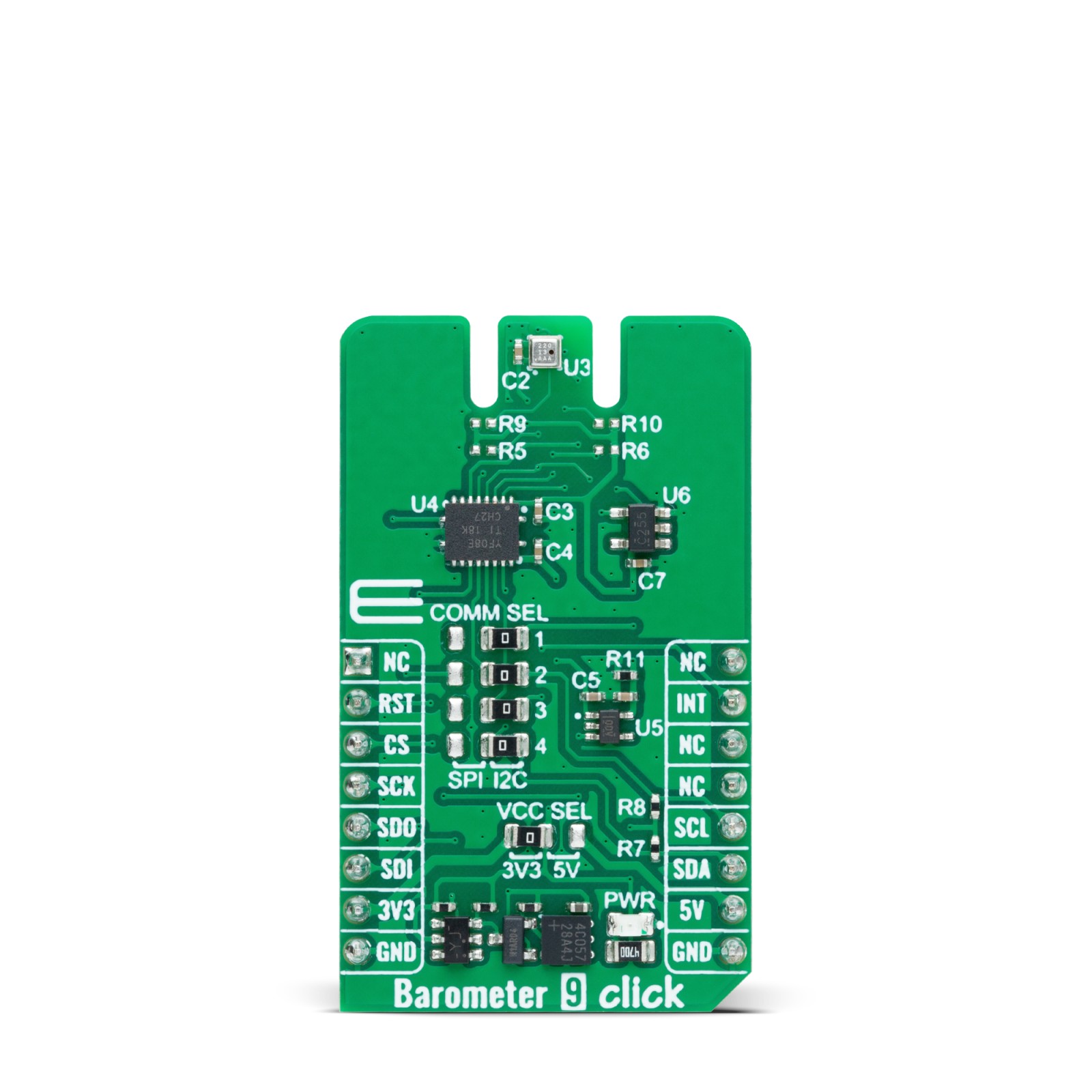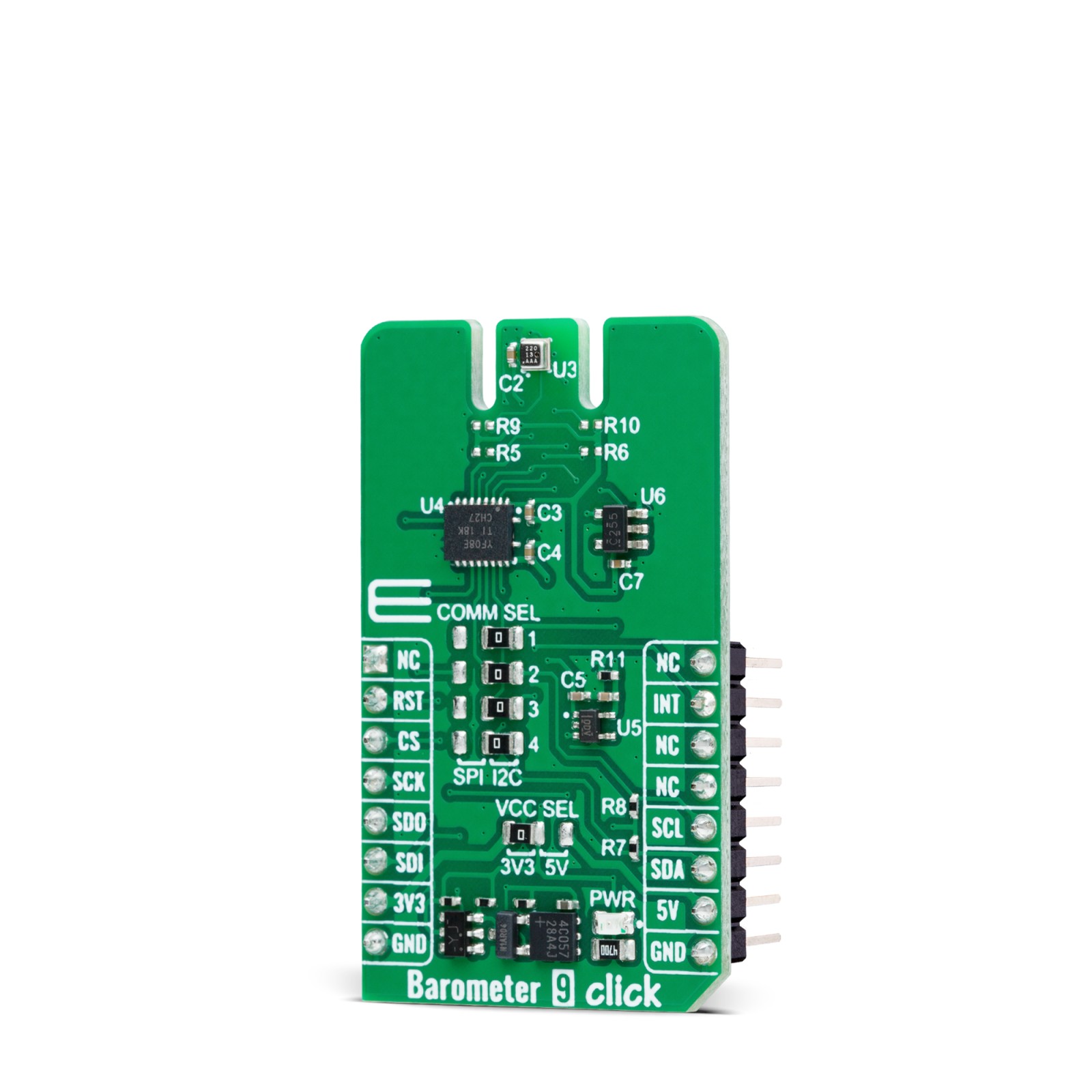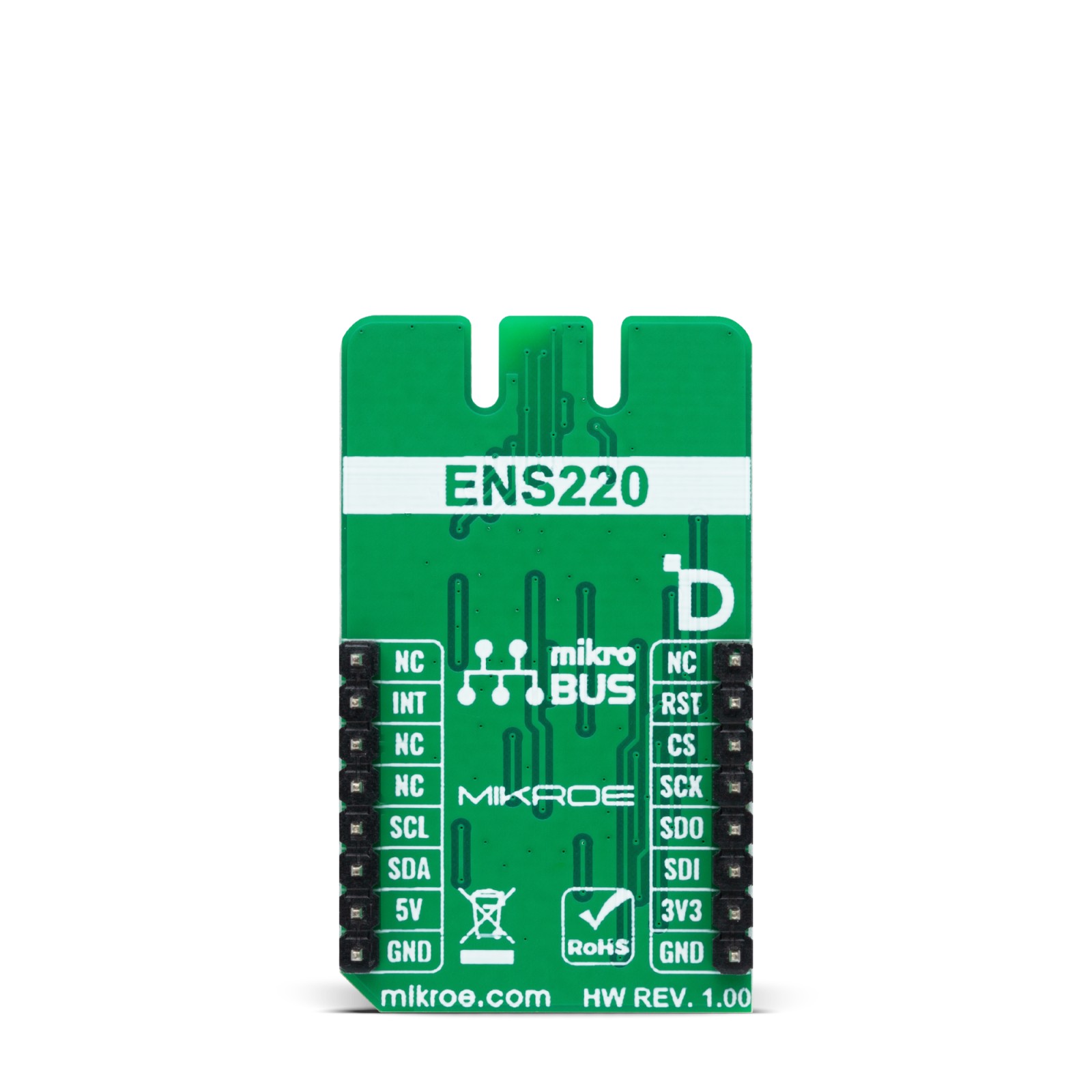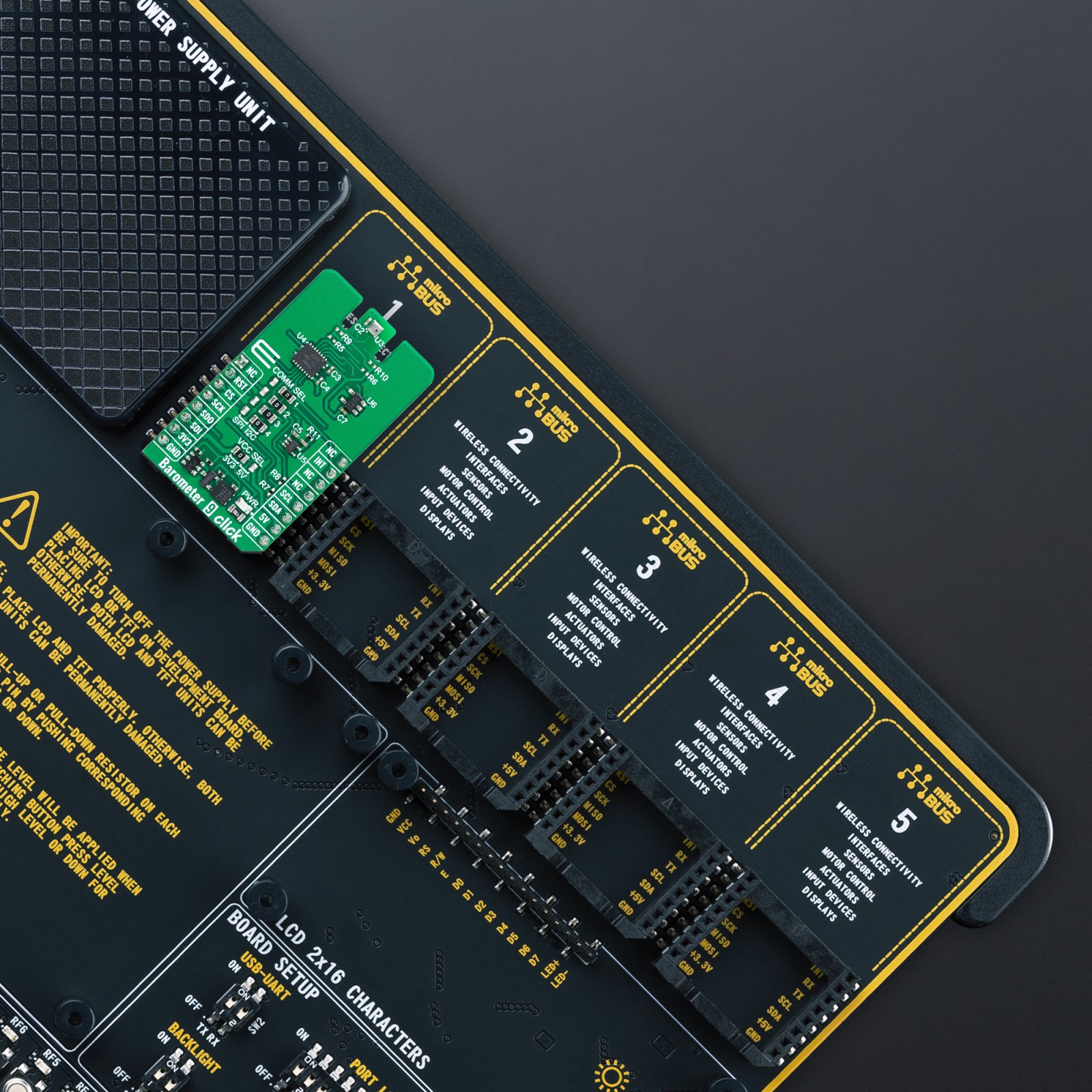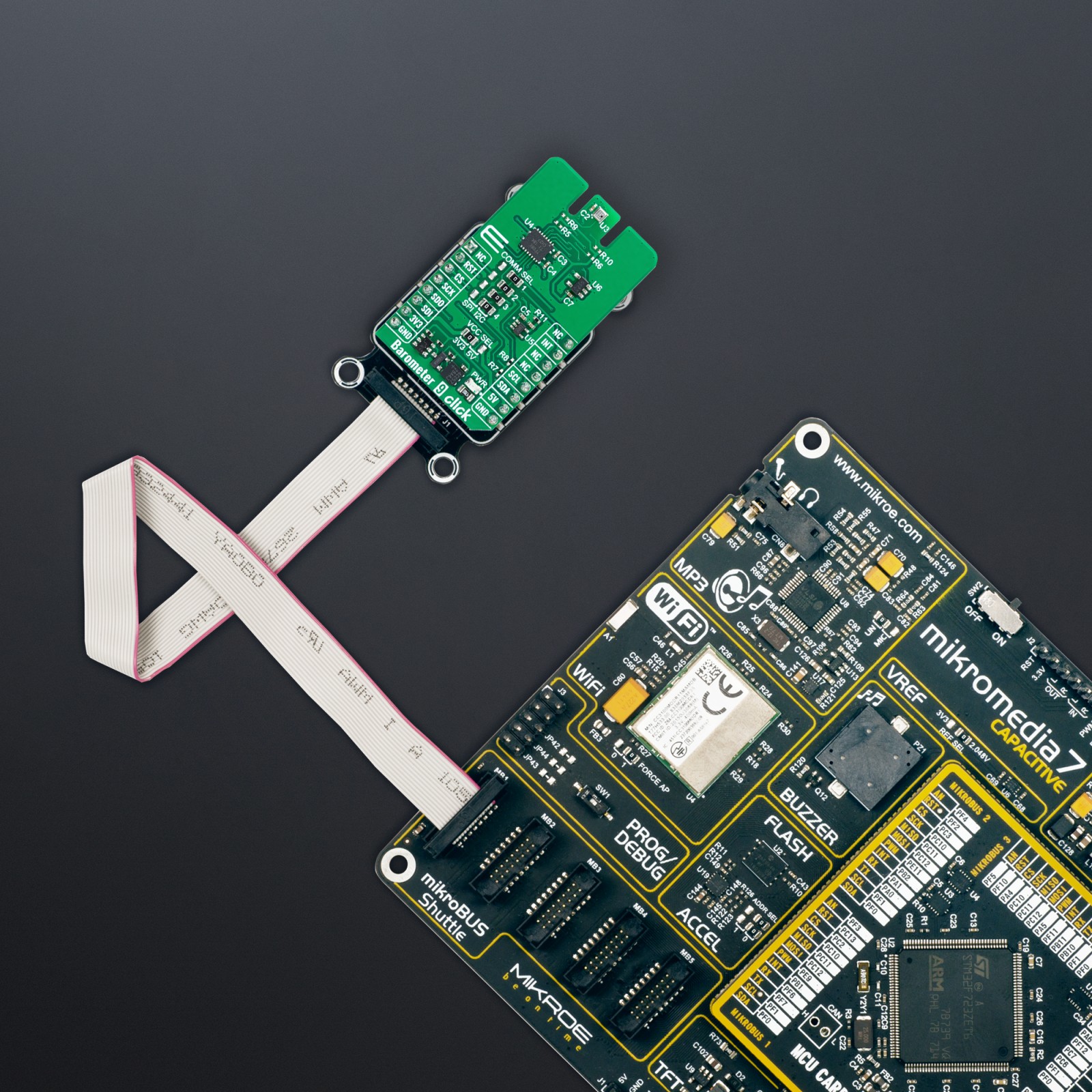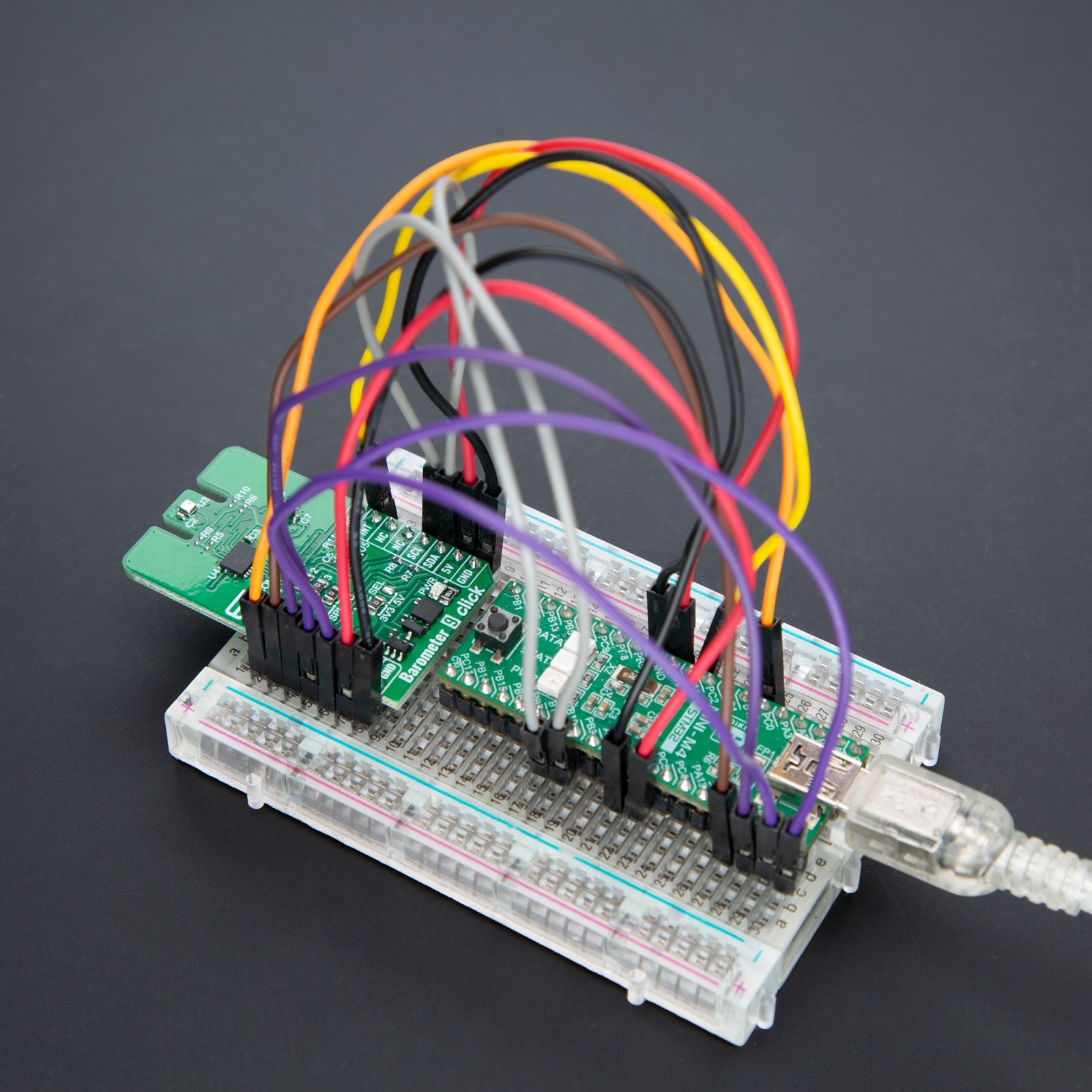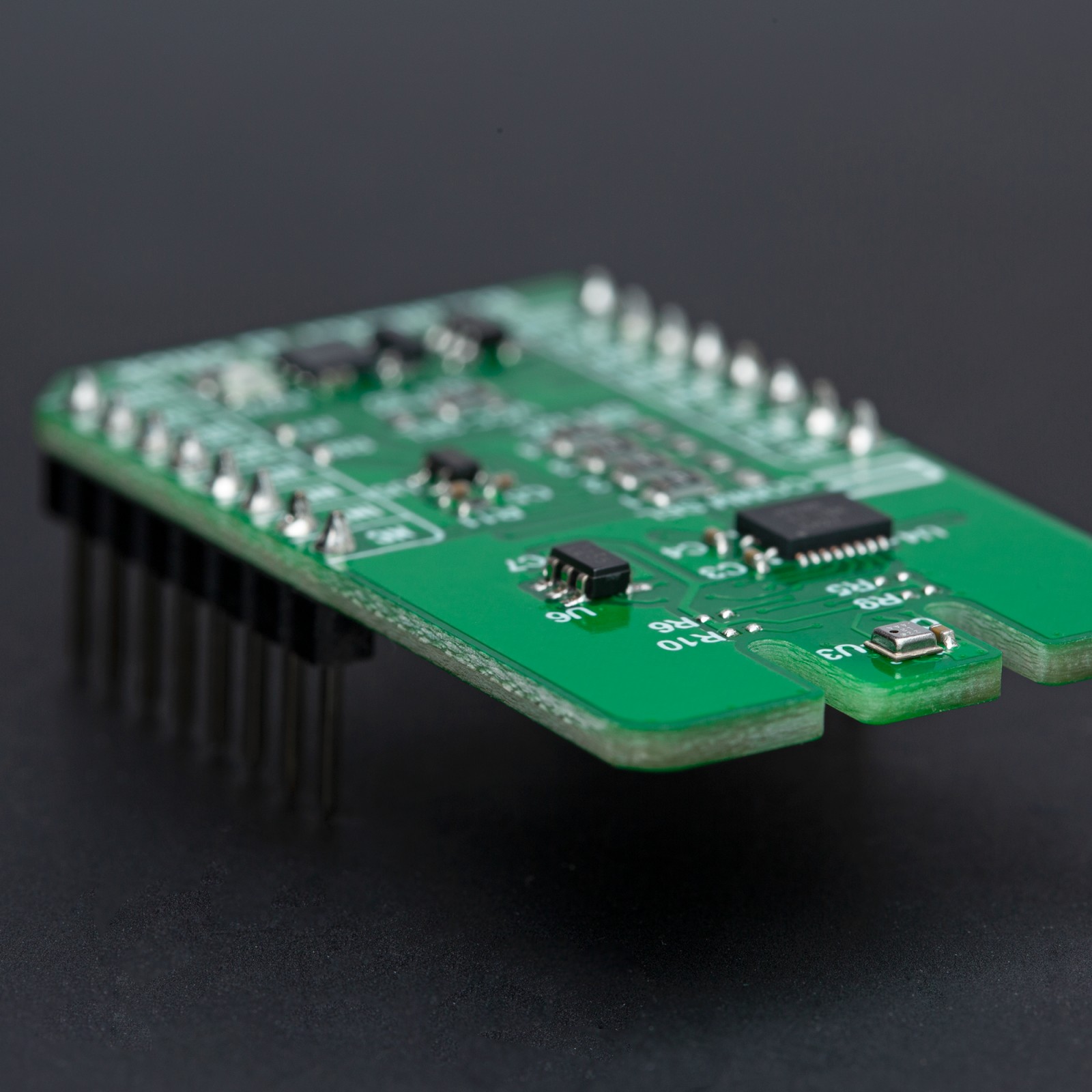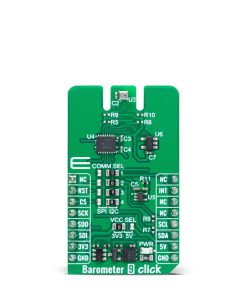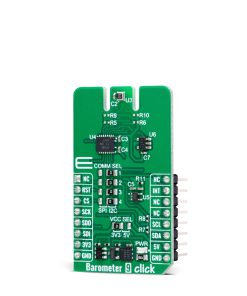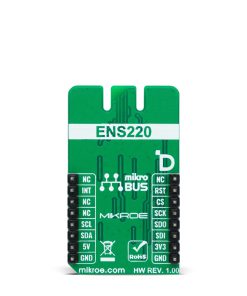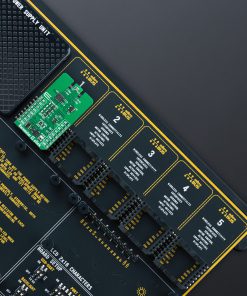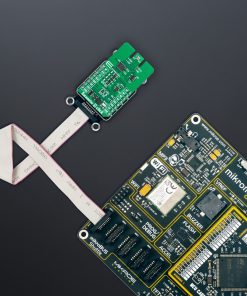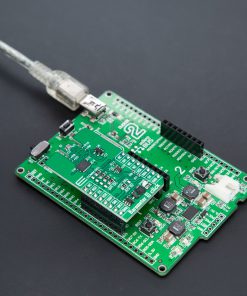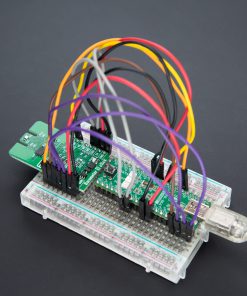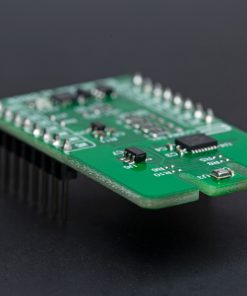Barometer 9 Click
R400.00 ex. VAT
Barometer 9 Click is a compact add-on board ideal for precision activity tracking and indoor navigation/localization. This board features the ENS220, a barometric pressure and temperature sensor from ScioSense. This sensor is characterized by its ultra-low power consumption and high accuracy, offering capabilities through both I2C and SPI communication interfaces. Including a pressure range of 300 to 1200hPa, absolute accuracy within ±0.5hPa, and temperature accuracy of ±0.1K, the Barometer 9 Click is optimized for applications requiring precise altitude and temperature measurements. Ideal for use cases such as activity tracking, indoor navigation, and environmental monitoring, this Click board™ provides developers with a powerful tool for creating sophisticated, location-aware devices in a compact and energy-efficient design.
Barometer 9 Click is fully compatible with the mikroBUS™ socket and can be used on any host system supporting the mikroBUS™ standard. It comes with the mikroSDK open-source libraries, offering unparalleled flexibility for evaluation and customization. What sets this Click board™ apart is the groundbreaking ClickID feature, enabling your host system to seamlessly and automatically detect and identify this add-on board.
Stock: Lead-time applicable.
| 5+ | R380.00 |
| 10+ | R360.00 |
| 15+ | R340.00 |
| 20+ | R327.20 |

